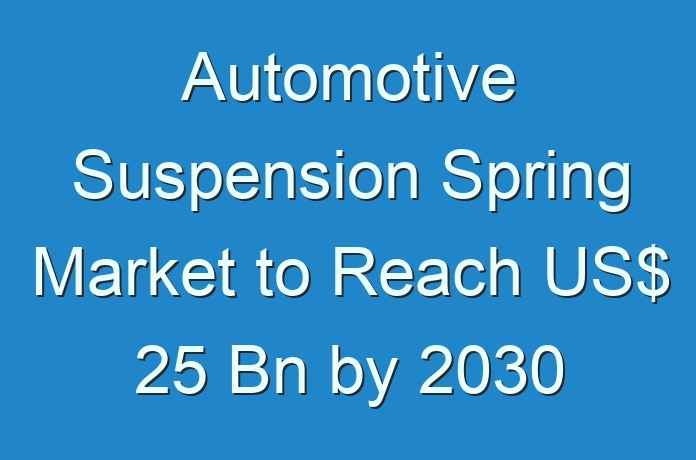
Alternative Sourcing Strategies Help Maintain Steady Supply Chains during COVID-19 Crisis
Several number of companies are restarting their operations since the COVID-19 pandemic has significantly subsided with the beginning of 2024. China, being the manufacturing hub for automobiles, is dictating the global automotive market in terms of demand and supply. Shortages of supplies from China have led to a domino effect around the world. Hence, companies in the automotive suspension spring market are focusing on supplying critical components to support manufacturers. They should consider adopting alternative sourcing strategies to maintain steady international supply chains.
Apart from identifying alternate suppliers, companies in the automotive suspension spring market should take into account the potential tax and tariff implications of suppliers. This involves customs, duties, and transfer pricing considerations, if the substitute components are internally sourced. As a response to the coronavirus pandemic, manufacturers are improving supply chain visibility and lines of communication to assess potential problems early on.
Want to know the obstructions to your company’s growth in future? Request a brochure @ https://www.transparencymarketresearch.com/sample/sample.php?flag=S&rep_id=81093
Air Spring Systems: Potential Threat to Automotive Suspension Spring Systems
The automotive suspension spring market is predicted to expand at a CAGR of ~5% during the assessment period. However, air spring systems made with airbags are emerging as a threat to steel coil springs and traditional spring suspension, which is likely to hamper market growth. As such, high cost, mechanical, and maintenance issues of air spring systems tend to establish a steady demand for conventional automotive suspension spring systems.
In order to increase sales of automotive suspension spring systems, manufacturers need to adopt inventiveness in their R&D and production activities. For instance, Mubea— a lightweight construction specialist for high-strength automotive components, has introduced its GFRP (Glass Fiber Reinforced Plastic) tension leaf spring, which is replacing traditional steel leaf springs. Thus, weight reduction in vehicles has become a crucial focus point for manufacturers in the in the automotive suspension spring market.
Collaborations Unlock Lucrative Potentials in Specialist Passenger Vehicles
Superior handling, less weight, and added comfort are being looked after in independent front suspension systems. Companies in the automotive suspension spring market are deploying innovations in independent front suspension systems, owing to their advantages of more stability and improved ride quality in rough terrains. The growing consumer preference for SUVs has fueled the demand for automotive suspension spring systems. This is evident since vehicle owners are becoming aware about superior lower and upper control arm features.
Suppliers and OEMs are collaborating with prestigious automotive vehicle manufacturers to design robust suspension springs. For instance, Melling Performance Springs— a spring supplier in Lytham St Annes, England, is partnering with renowned automotive vehicle manufacturers to deploy inventive technologies in steering system springs and suspension. Companies in the automotive suspension spring market are extending their supply arms for specialist passenger vehicles and premier automotive to expand their revenue streams.
Looking for exclusive market insights from business experts? Request a Custom Report
Economical Production of Helical Compression Springs Grabs Attention of Stakeholders
The current density of traffic on roads has triggered the requirement for safe and comfortable vehicles. Manufacturers in the automotive suspension spring market are increasing efforts to introduce intuitive designs, cost-effectiveness, and fault-free operation in systems to enhance driver safety and comfort. Apart from coil and leaf springs, manufacturers are developing helical compression springs that offer resilience in components and systems. The compact design of helical compression springs is grabbing the attention of OEMs, automotive manufacturers, and others in the value chain.
Space saving installations with compact design of helical compression springs is likely to boost car sales. Manufacturers in the automotive suspension spring market are capitalizing on this opportunity, as developing helical compression springs is economical. Maintenance-free attributes of helical compression springs ensure a proper pitch response and ground clearance of the vehicle body.





